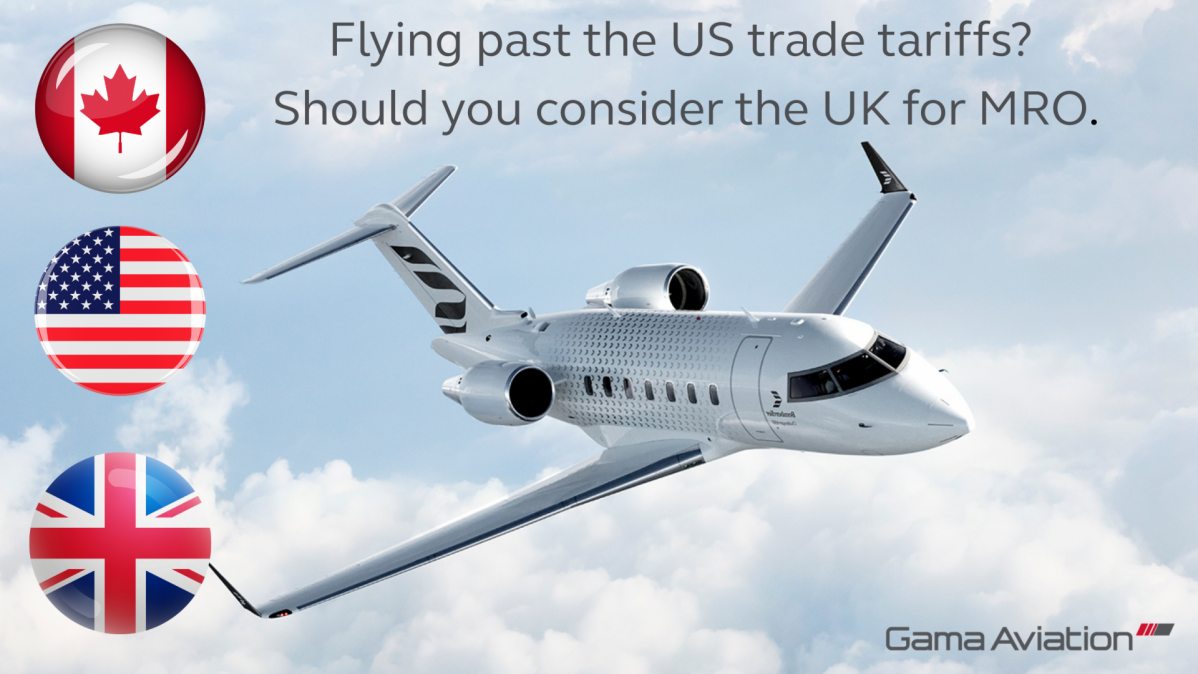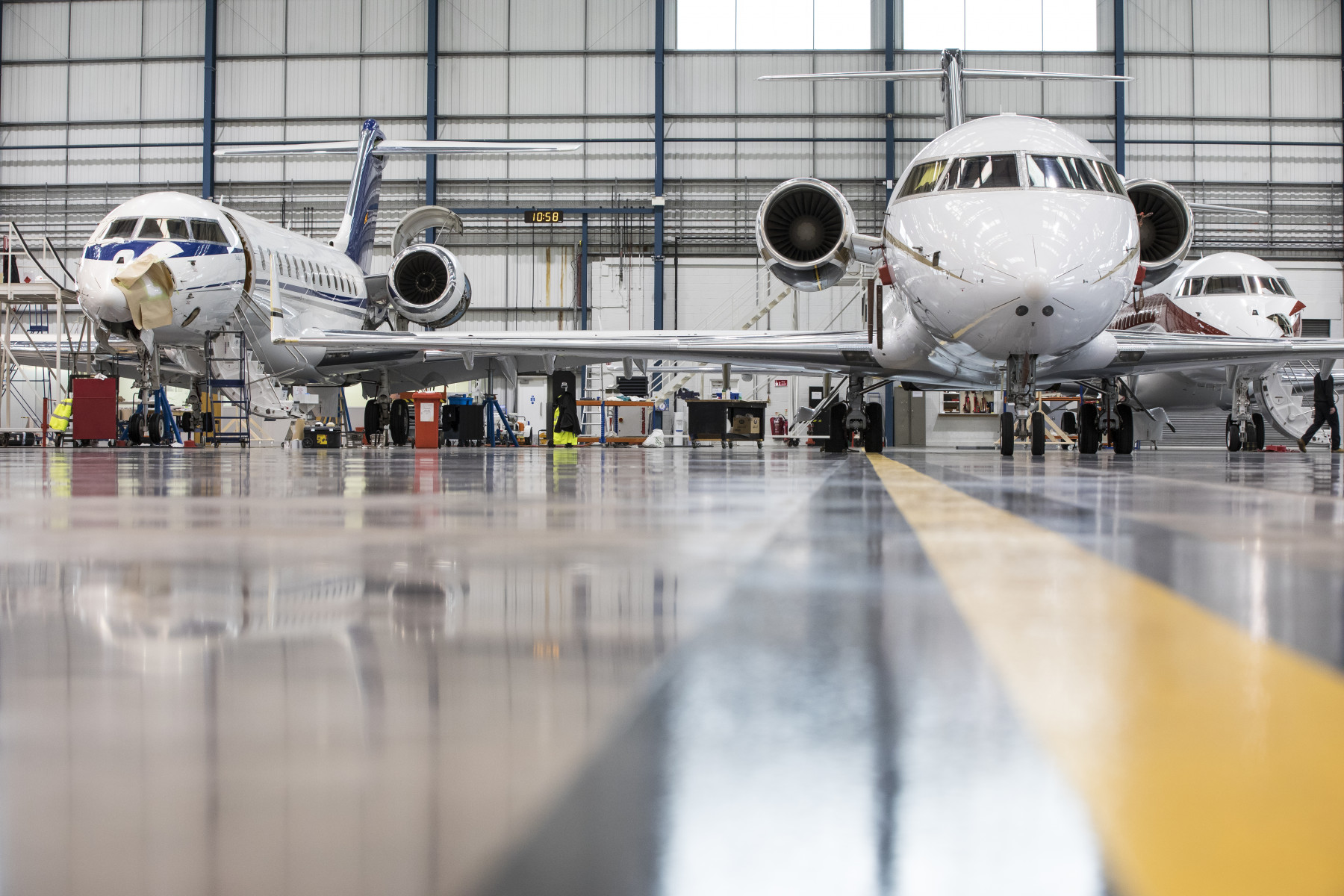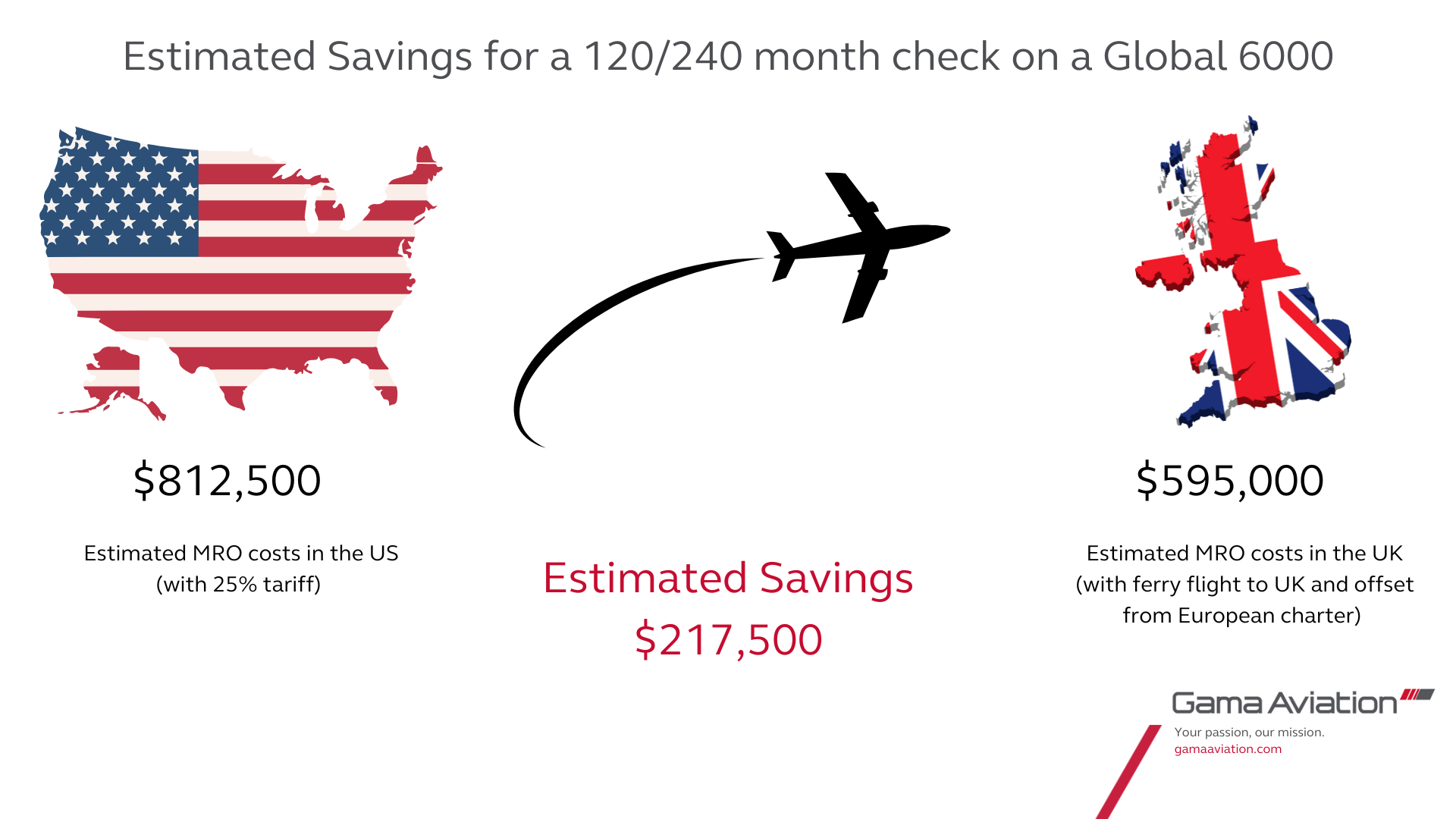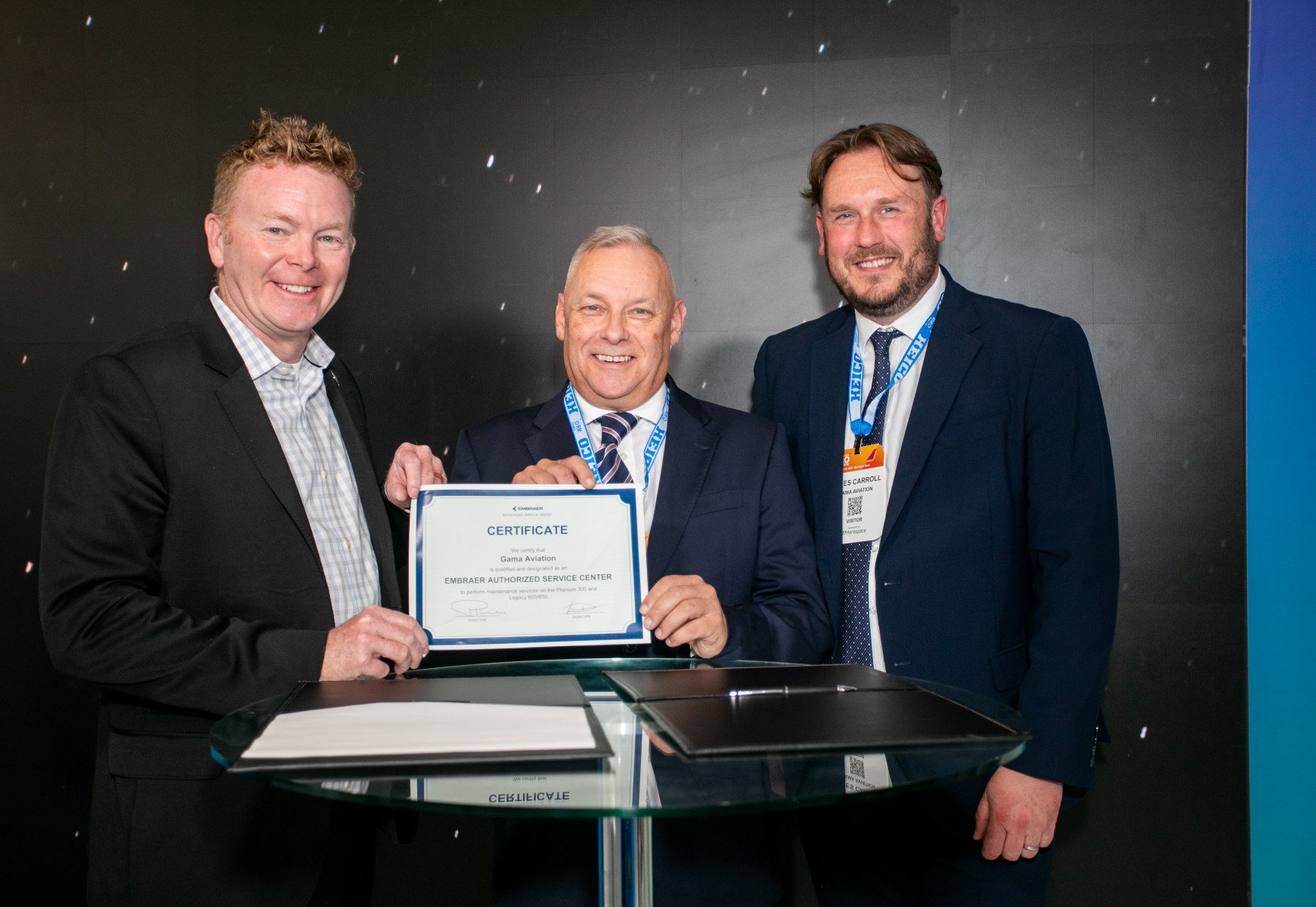
News Feature: Could New US-Canada Trade Tariffs Shift MRO Strategies Toward the UK?
As rising trade tensions between the US and Canada loom over the aviation sector, private jet owners and aircraft management firms are being forced to reconsider their options.
The Trump administration’s latest move to impose fresh tariffs on Canadian-manufactured goods has reignited trade friction between two of North America’s most interdependent economies. Among the sectors most at risk is business aviation, where Canadian-manufactured components, systems, and maintenance services play a significant role in the operational support of private aircraft registered in both the US and Canada.
The proposed tariffs, which could climb to 25% on certain aviation-related imports, have the potential to reshape where and how maintenance, repair and overhaul (MRO) work is carried out. As a result, decision-makers across the aviation ecosystem are now weighing the pros and cons of relocating key services away from North America altogether.
The Case for Re-Evaluating MRO Strategies
According to Holland & Knight’s March 2025 briefing, the reintroduction of tariffs could increase costs for US operators relying on Canadian MRO products and services by as much as 25%. For an industry already under pressure from rising fuel costs, global supply chain delays, and skilled labour shortages, this is a margin that cannot be ignored.
In the same report, analysts suggest that operators may need to diversify their sourcing strategies to mitigate risk and limit exposure to geopolitical shifts. The UK emerges as a compelling option, not just because of its high standards of engineering and regulatory alignment, but because it remains exempt from these tariff-related increases.
The cost benefits alone are considerable. Sourcing components and services outside the US-Canada trade corridor can significantly reduce total maintenance bills, particularly for scheduled heavy checks and avionics upgrades. Added to this are time zone advantages for European-bound flights, and the ability to align maintenance downtime with planned aircraft positioning.
Gama Aviation, for example, operates Part 145 MRO facilities in Bournemouth, Farnborough, and Luton, with extensive experience servicing US and Canadian-registered aircraft. These bases offer full transparency on pricing, highly qualified engineers, and short lead times—particularly valuable during seasonal lulls or when aligning work with transatlantic business itineraries.
Expert Viewpoints: Why North American Operators Are Looking to the UK
Gama Aviation’s UK MRO division is already seeing an increase in transatlantic demand, particularly from operators of large-cabin aircraft such as the Global, Challenger and Legacy families.
“We’ve completed a growing number of inspections on North American registered aircraft at our Bournemouth facility,” explains Paul Kinch, Managing Director of Gama Aviation’s MRO operations. “The tariff issue is only accelerating what was already happening — operators are looking for cost control without compromising engineering quality or downtime planning.”
James Carroll, Gama Aviation’s Head of MRO Sales, agrees: “Aircraft owners are becoming more strategic in their thinking. If your jet is due in Europe for summer or Q4 use, and you can save six figures by scheduling the check in the UK, why wouldn’t you do that? We’re seeing these conversations shift from ‘possible’ to ‘practical’.”
How the Numbers Stack Up: Calculating the Real Savings
To assess the financial impact of these proposed tariffs, we created a comparative model based on a Bombardier Global 6000 undergoing a routine 120/240-month inspection — one of the most common heavy checks for large-cabin aircraft.
| Location | Base MRO estimate | Tariffs/ Offsets | Total Estimated Cost |
| US | $650,000 | +25% tariff | $812,500 |
| UK | $610,000 | +$25K ferry, -$40K charter | $595,000 |
- 25% Tariff: Based on Holland & Knight’s 2025 briefing, which anticipates cost increases on Canadian-sourced components.
- Ferry Flight: Estimated at $25,000 from North America to Bournemouth.
- Charter Offset: Aircraft positioned in Europe can earn up to $40,000 in additional charter revenue or offset flights during maintenance downtime.
This model is conservative and assumes no change in inspection scope, timing, or regulatory approvals. Actual savings may vary depending on fleet configuration, routing, and maintenance planning windows.
The Case for Staying Local
However, there are also valid arguments for keeping MRO work within North America. Aircraft downtime is costly, and flying across the Atlantic for maintenance can add operational complexity. Ferry flights, repositioning logistics, and coordination with local regulatory bodies (such as the FAA or Transport Canada) must be factored into any decision.
There are also concerns around the scalability of UK-based MRO capacity if a large number of operators suddenly pivot toward Europe. While UK providers like Gama Aviation are equipped for growth, the industry as a whole will need to keep pace with any sharp uptick in demand.
Furthermore, not all maintenance is created equal. For unscheduled repairs, AOG support, or light line maintenance, proximity and speed often outweigh cost considerations. In such scenarios, regional support across North America remains the most practical solution.
Navigating the Tariff Dilemma: Is There a Middle Ground?
For many operators, the ideal strategy may lie in flexibility. By adopting a hybrid MRO approach—leveraging local services for line maintenance and reserving heavier checks or major upgrades for overseas providers—owners and management firms can optimise both cost and downtime.
This approach also opens the door to seasonal planning. For example, aircraft repositioned in Europe during the summer months can undergo planned maintenance at UK facilities during scheduled downtime, avoiding the compounded cost pressures of North American tariffs.
Ultimately, each aircraft operation is unique, and the impact of these tariffs will vary depending on fleet size, routing, maintenance cycles and budget priorities.
Summary: The Path Forward
While the full implications of the proposed US-Canada tariffs are still unfolding, one thing is clear: aircraft operators can no longer afford to view MRO as a static, domestic-only activity.
The question is no longer just where your aircraft is registered, but where it makes the most sense to maintain it.
At Gama Aviation, we understand the shifting dynamics of global aviation. That’s why our UK-based MRO teams work closely with international operators to provide seamless, high-quality support that aligns with both financial and operational priorities.
Could the UK offer a viable, tariff-free solution to your maintenance strategy?
We welcome the discussion. Connect with our team to explore how we can help you navigate this evolving landscape.
Get in Touch Today



